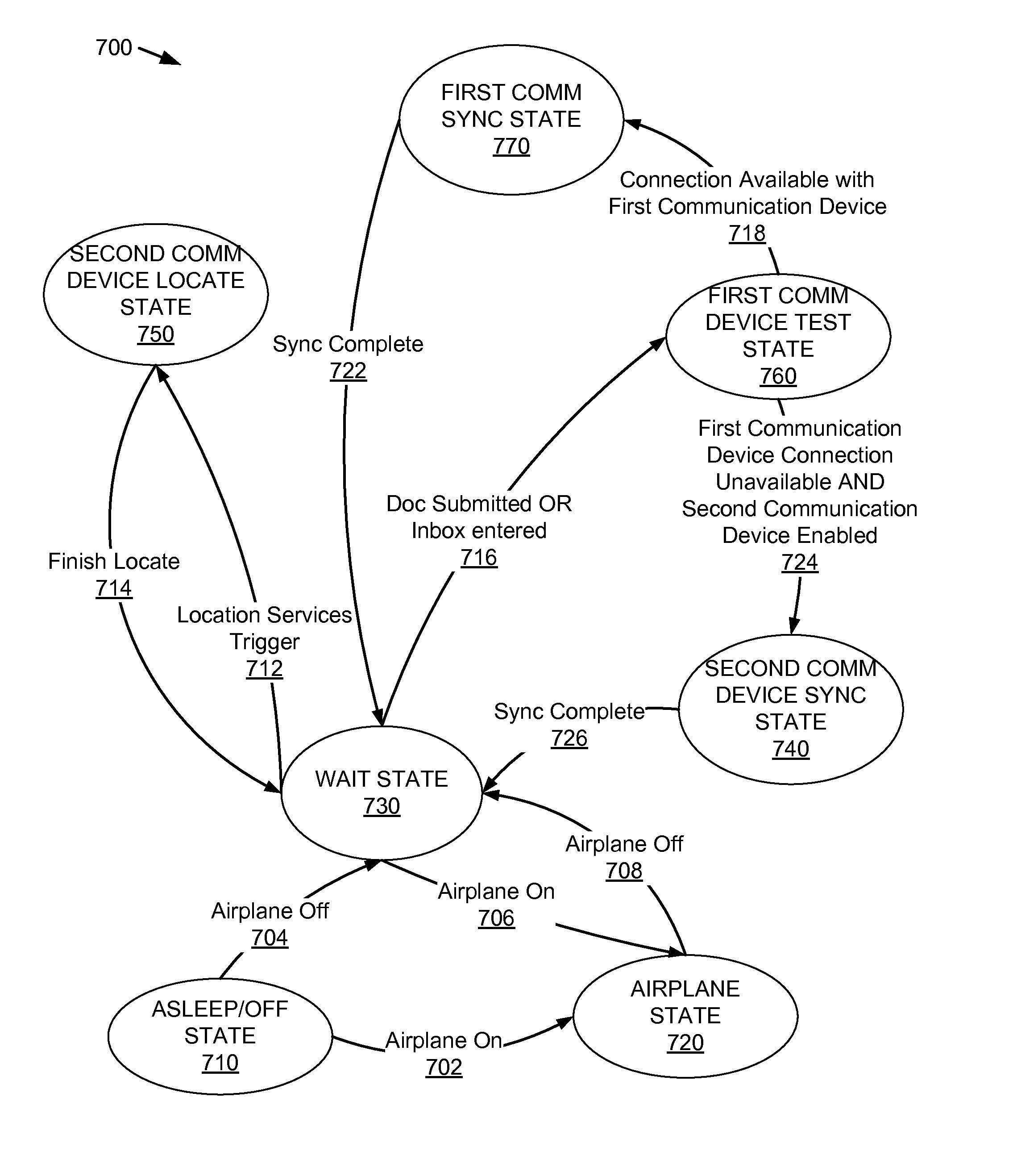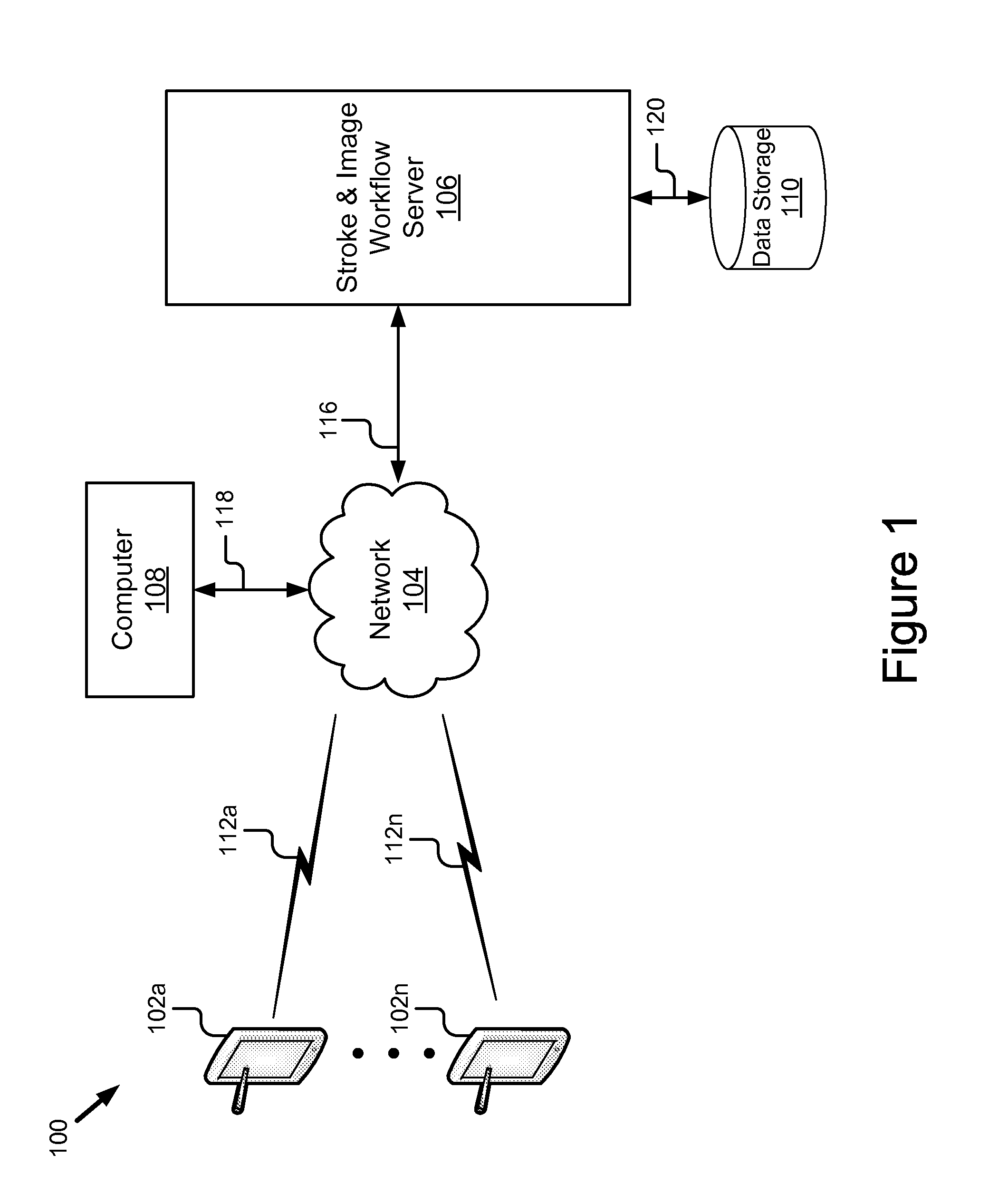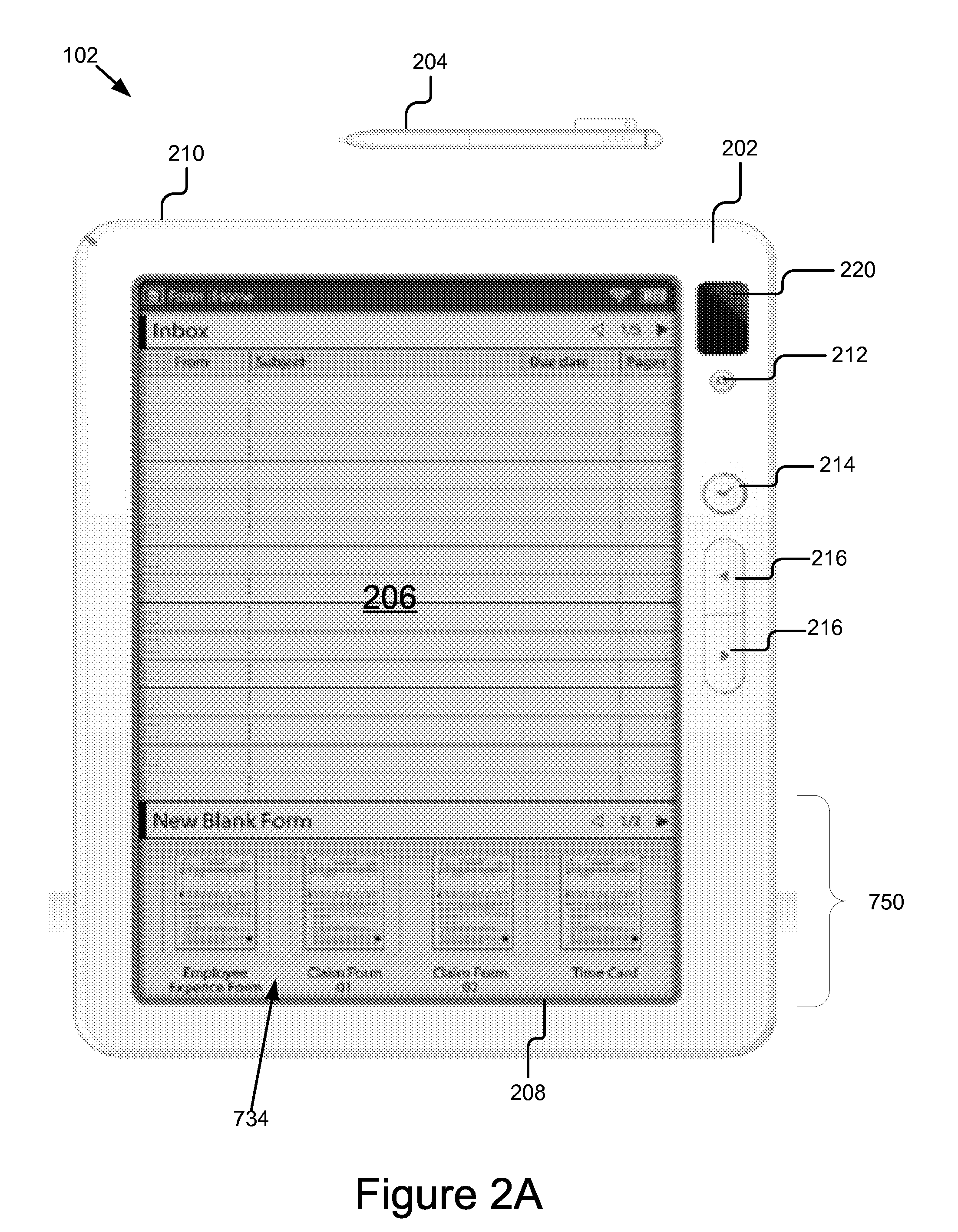Power management based on combined user interface and sensor inputs
- Summary
- Abstract
- Description
- Claims
- Application Information
AI Technical Summary
Benefits of technology
Problems solved by technology
Method used
Image
Examples
first embodiment
[0060]In a first embodiment, the document transfer module 316 is client software operational on the computing pad 202 that maintains a directory structure that serves as an inbox. The document transfer module 316 moves documents from a corresponding inbox on the stroke and image workflow server 106 to this directory. Once a document in the inbox of the computing pad 202 has been annotated and the user inputs the submit instruction, the document transfer module 316 removes the document from the directory structure and transfers it to the stroke and image workflow server 106 for further processing.
second embodiment
[0061]In a second embodiment, the document transfer module 316 is an e-mail client that is capable of receiving and sending e-mails having attachments. The e-mail client is operable on the processor 302. Mail servers commonly use either the POP or IMAP protocols to talk to mail clients, and the computing pad 202 is configured to use either. The messages are in a format the computing pad 202 can directly use, e.g. an attachment of image files. The messages are in a format that requires conversion on the computing pad 202, e.g. a pdf document. Alternatively, a special mail server could provide conversion of messages so that the pad does not need to support multiple formats. In the case of multiple devices being used in a workflow to distribute work that must only be done once e.g. as in the departmental in-box described above, using IMAP is advantageous. Multiple devices 102a-n may be configured as clients with the same IMAP server and ‘username.’ The group of devices 102a-n might dis...
third embodiment
[0062]In a third embodiment, the document transfer module 316 is a routine for performing file transfer. Various file transfer methods can be used to move documents on and off the computing pad 202. The computing pad 202 could run an ftp, http, or webdav server and other devices could push or pull documents on the computing pad 202. The computing pad 202 could also be configured to get or post new documents to an external server, again via ftp, http, rsync, webdav, or another protocol.
PUM
 Login to View More
Login to View More Abstract
Description
Claims
Application Information
 Login to View More
Login to View More - R&D
- Intellectual Property
- Life Sciences
- Materials
- Tech Scout
- Unparalleled Data Quality
- Higher Quality Content
- 60% Fewer Hallucinations
Browse by: Latest US Patents, China's latest patents, Technical Efficacy Thesaurus, Application Domain, Technology Topic, Popular Technical Reports.
© 2025 PatSnap. All rights reserved.Legal|Privacy policy|Modern Slavery Act Transparency Statement|Sitemap|About US| Contact US: help@patsnap.com



